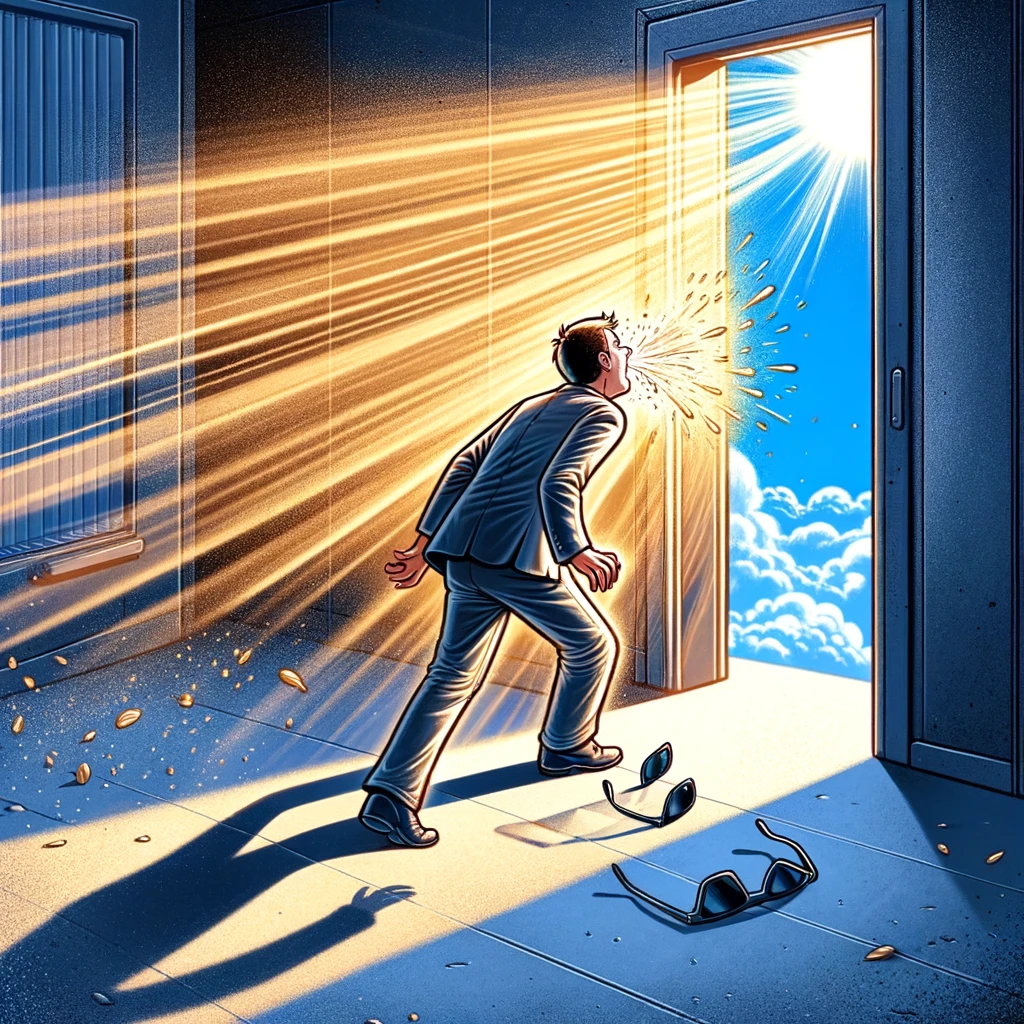We sneeze when we look at the sun due to a reflex called the photic sneeze reflex, or “ACHOO Syndrome” (Autosomal Dominant Compelling Helio-Ophthalmic Outburst Syndrome). This reflex is believed to be caused by a sudden exposure to bright light stimulating the optic nerve, which in turn triggers the trigeminal nerve—the nerve responsible for facial sensation and motor control, including sneezing. This cross-talk between the nerves leads to the sneeze. The photic sneeze reflex is thought to be genetic, affecting 18-35% of the population.
But what exactly causes this reflex? Researchers suggest that the phenomenon may be due to cross-talk between the optic nerve, which perceives light, and the trigeminal nerve, which mediates the sneeze reflex. When bright light suddenly stimulates the optic nerve, it can inadvertently trigger the trigeminal nerve, leading to a sneeze. This theory, however, is still under investigation, with studies exploring the depths of our neural pathways to provide a clearer understanding.

Who Gets the ACHOO Syndrome?
Photic sneezing isn’t universal; it’s more likely to occur in people with a specific genetic makeup. If you’ve noticed this happening frequently, chances are you’ve inherited this quirky reflex. It’s an interesting conversation starter, but it’s also a reminder of the diversity in human physiology.
The primary factor determining who gets the ACHOO Syndrome is genetics. It is believed to be an autosomal dominant trait, which means that only one copy of the gene from either parent is sufficient for the offspring to exhibit the trait. If one parent has the ACHOO Syndrome, there’s a 50% chance that their child will also have the reflex. The specific genes responsible for this reflex have not been definitively identified, but its pattern of inheritance is clear.
The prevalence of the ACHOO Syndrome varies widely among different populations and ethnic groups. Studies have shown that the reflex is present across various demographics, but detailed epidemiological data comparing rates across different populations are limited. The estimated 18-35% prevalence rate provides a broad perspective, indicating a significant portion of the global population experiences this reflex.
The Impact of Photic Sneezing on Daily Life
For most, the photic sneeze reflex is merely a curiosity, a minor inconvenience when transitioning from dark to light environments. However, for professionals like pilots or drivers, understanding and managing this reflex becomes crucial. Bright lights, especially when driving out of a tunnel or flying above the clouds, can provoke an untimely sneeze, posing safety risks.
Managing the Photic Sneeze Reflex
While there’s no cure for ACHOO Syndrome, there are ways to manage it. Wearing polarized sunglasses outdoors can help mitigate the intensity of light reaching the eyes, reducing the likelihood of a sneeze. Additionally, gradually acclimating to bright environments allows the optic nerve to adjust without overstimulating the trigeminal nerve.
When to Seek Medical Advice
While the photic sneeze reflex, or ACHOO Syndrome, is generally considered a benign and harmless condition, there are circumstances under which individuals might seek medical advice. Recognizing these situations can help ensure that any underlying health concerns are addressed and that the reflex does not significantly impact one’s quality of life.
If the reflex causes frequent or severe sneezing episodes that interfere with daily activities or lead to discomfort, it may be worth discussing with a healthcare provider. Persistent sneezing could contribute to or signal other respiratory or nasal conditions that require treatment.
Should the sneezing be accompanied by other symptoms, such as pain, significant discomfort, headaches, or visual disturbances, it’s important to consult a medical professional. These additional symptoms could indicate an unrelated underlying condition that coincidentally presents alongside the photic sneeze reflex.
The Future of Research
The photic sneeze reflex remains a field ripe for exploration. Ongoing research aims to uncover the genetic basis of ACHOO Syndrome and its potential connections to other neurological or ophthalmological conditions. By understanding the intricacies of this reflex, scientists hope to unravel broader mysteries of human sensory integration and reflex pathways.

